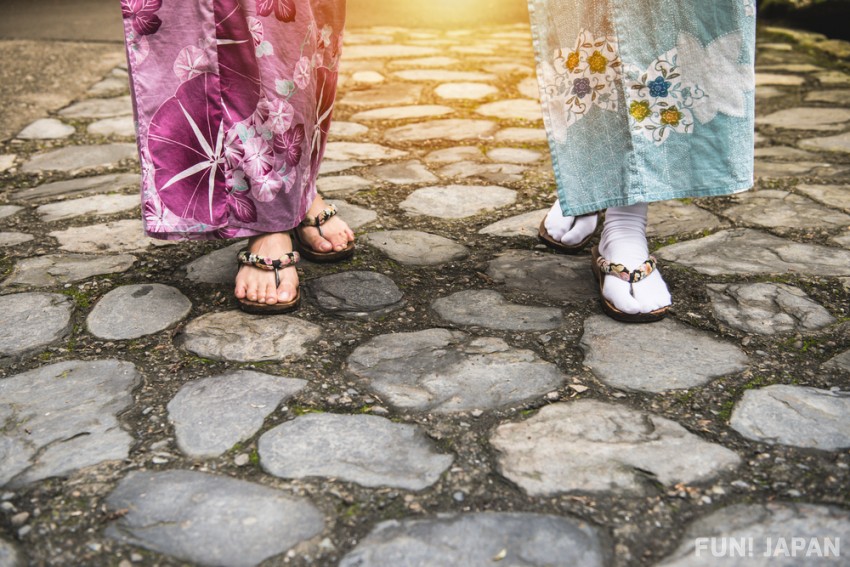
Kimono is regarded as the national dress of Japan. When wearing a kimono, it is important to wear the right footwear and obi sash according to go with the kimono. It is customary to wear zori (草履 thonged sandals) or geta (下駄 wooden sandal with "teeth" or spars across the bottom) that is a kind of cross between a clog and a flip-flop. We will explain the specific features of each type of footwear and kimonos that they are suited to.
Kimono Shoes; Zori
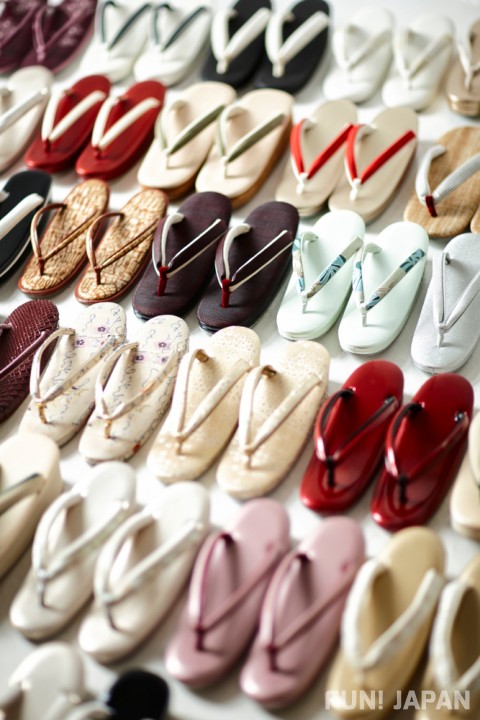
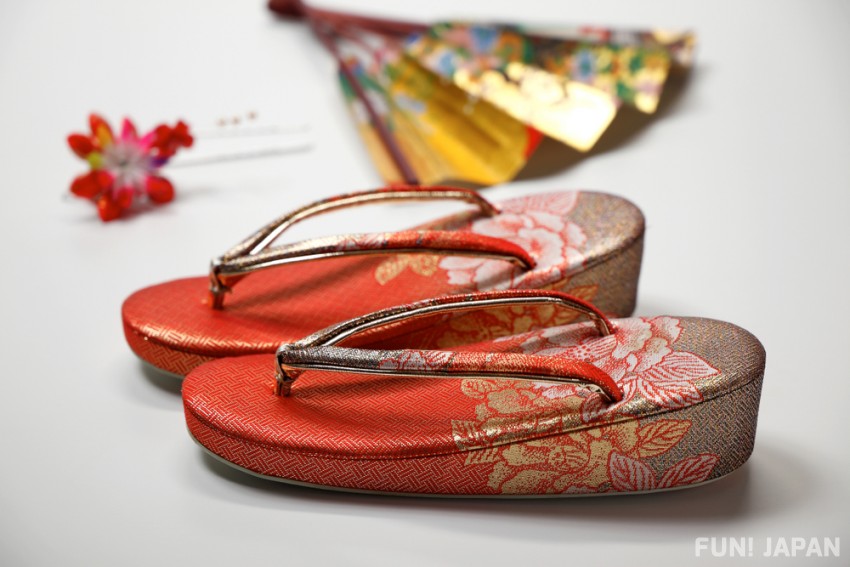
Zori are made by attaching a Hanao (鼻緒 thong) to the base (台 dai) that has an eliptical shape. The main body is made by covering the cork core with leather, and some are coated with enamel or pearl. The bottom of the sandal is flat, while heights vary by stacking up the base to a greater or lesser extent. It is said that the higher the base, the more formal the zori.
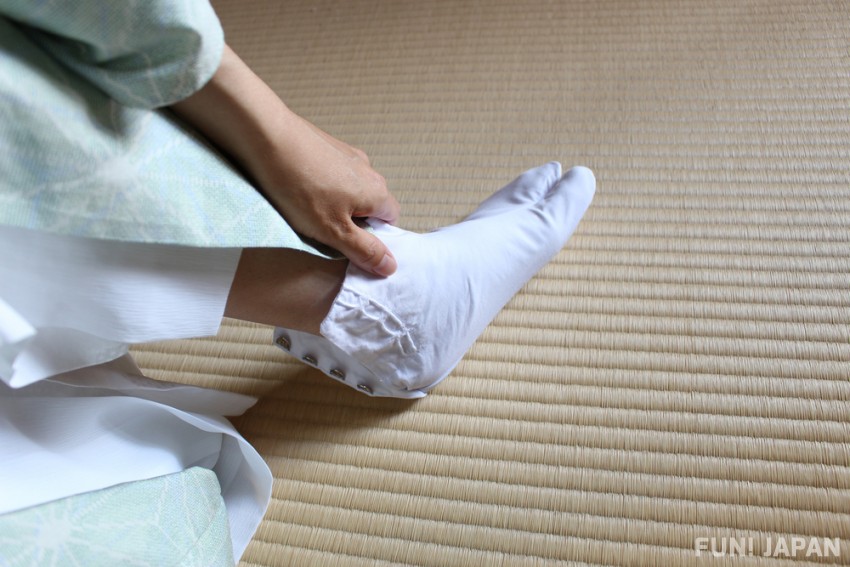
When wearing zori, the rule is to wear tabi (足袋), socks that resemble mittens with the big toe separated from the other four . Although they are marked for the left and right foot respectively, zori are made symmetrically so it doesn't matter on which foot they go. Zori can be made to measure, but standard sizes are S (approx. 22.5 cm), M (approx. 23.5 cm) and L (approx. 24.5 cm) . It is said that the best size for zori is when the feet stick out a little beyond them, so it is not really necessary to have a precise fit. When walking, it is considered good etiquette to do so without making noise.
Footwear for Formal Black Kimono
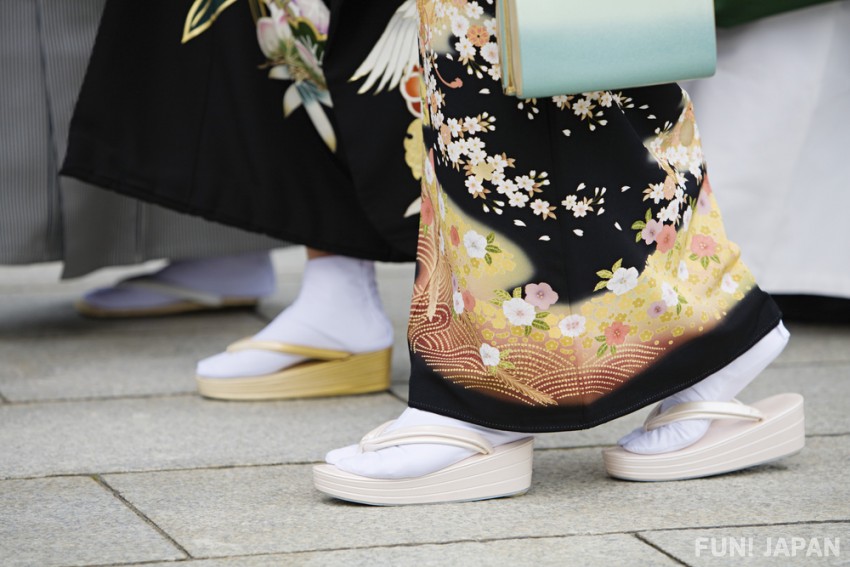
Black tomesode is the most formal kimono for women. The height of the zori's base is 5 cm or more. The base and thong should be of the same color and material, and preferably a luxurious one that contains gold or silver thread.
Furisode with Matching Zori
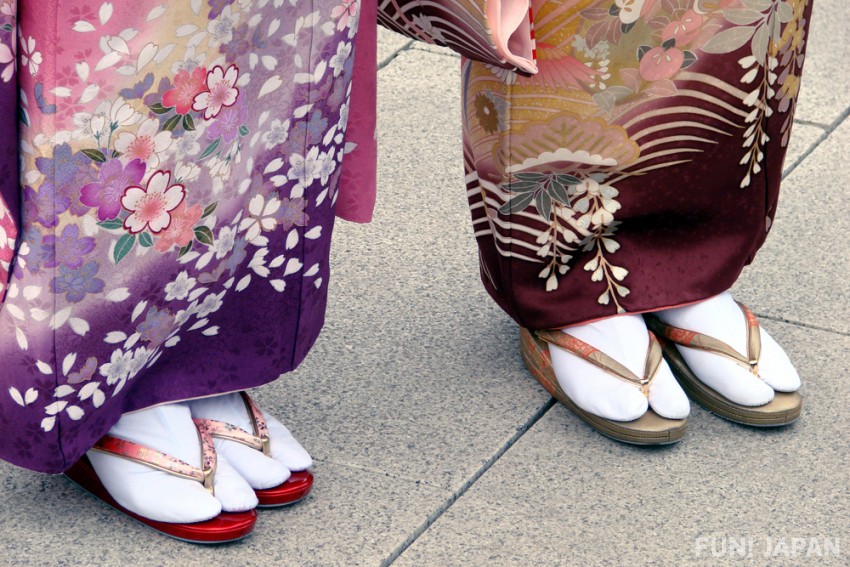
Furisode is the formal wear for unmarried women. With a formal kimono, the height of the base should be as much as 5 cm. Elaborate zori such as with patterns on the thongs or in bright colors are preferred.
Homongi with Matching Zori
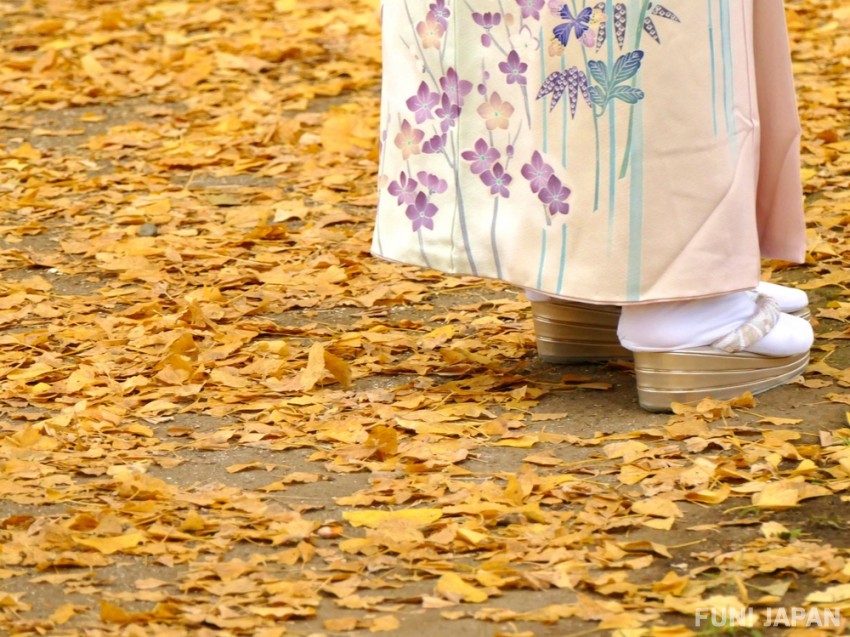
Homongi or visiting kimono is a semi-formal kimono worn when attending a tea party or reception as a guest. Kimono colors other than black are selected according to the season and the event, so beige, off-white, and grayish colors are preferred.
Kimono Shoes; Geta
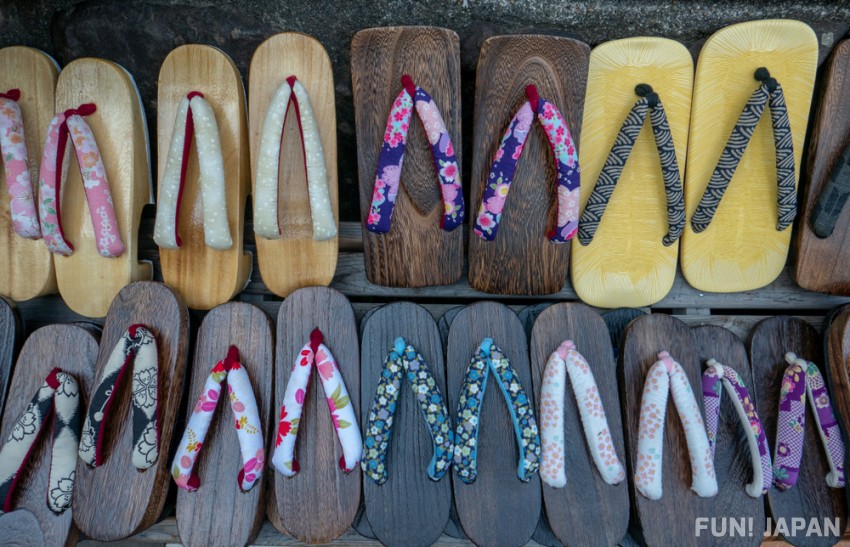

A geta is footwear that has a thong attached to a wooden sole with two "ha" (literally "teeth"), on the underside. Common materials are cedar (杉 / Sugi) and princess tree (桐 / Kiri), which are more suitable for casual kimono than sandals. The shape of the sole is generally rectangular. Similar to zori, the three sizes are S (about 22.5 cm), M (about 23.5 cm), and L (about 24.5 cm). Likewise, the best size is considered to be where the feet extend slightly beyond the sole, so there is no need for a precise fit. Since there are numerous types of ha, we will introduce a standard geta.
Komageta

This geta has two parallel "teeth" across the bottom. It is said that the name komageta is derived from the fact that shape resembles that of a horse's hoof. It is light, and its charm is the distinctive clopping sound it makes when you walk.
Nomeri

With these geta, the back teeth are rectangles forming the heels, while the front teeth are cut at an angle toward the toes. It uses more wood than Komageta, so it is a little heavier, but they are hardly worn down by usage and last a long time.
Ukon
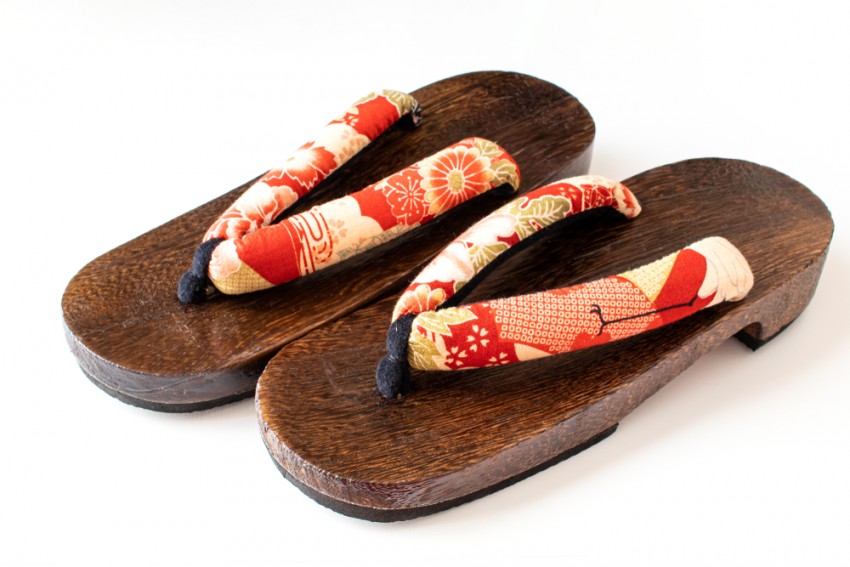
This variety has a thick footbase with very short teeth resembling a regular sole and heel. They look almost like zori, and many are made with a rubber or other non-slip sole on the bottom, so even novices can walk in them with confidence.
Yukata with Matching Geta
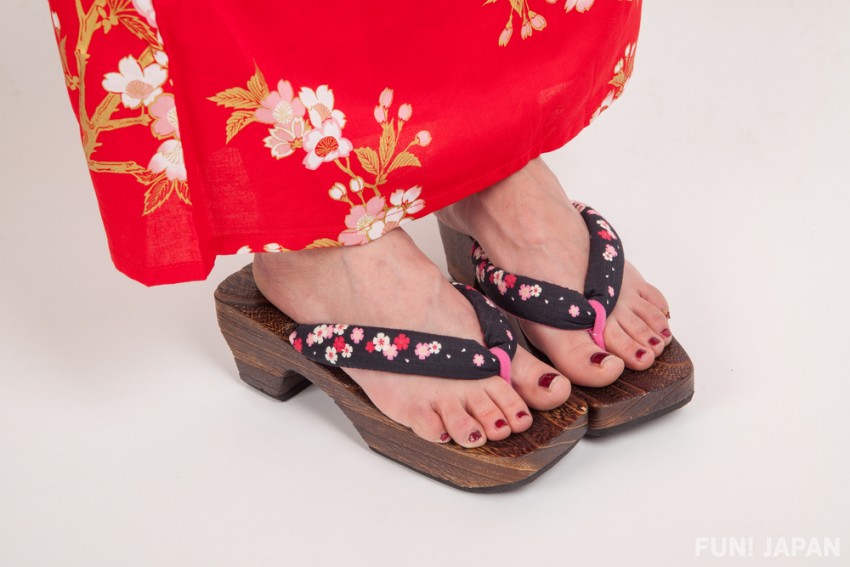
Geta go well with the most casual type kimono; the yukata. Also, since geta are generally worn with bare feet, applying nail varnish is one of the ways to enjoy fashionable coordination.
Kimono Shoes; Boots!?
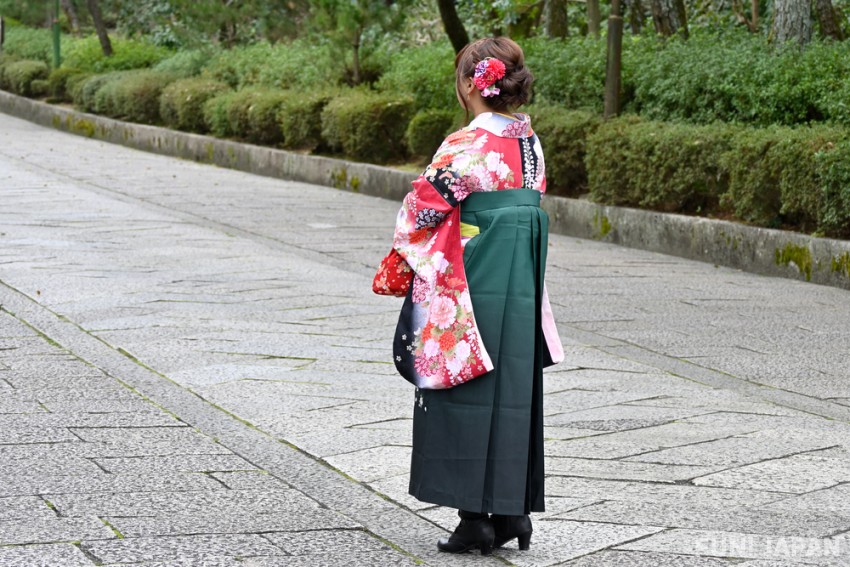
While it is normal to wear zori and geta with a kimono, if a female student wears a hakama at her graduation ceremony, she may wear boots. The hakama was adopted as a uniform for female students in the Meiji era, and to this day is a costume that has a special meaning as a symbol for women scholars.
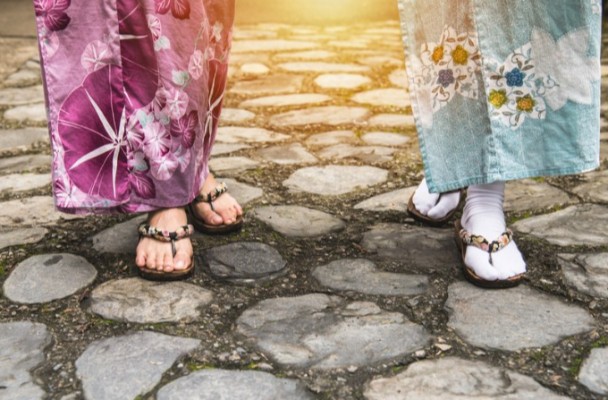
Comments